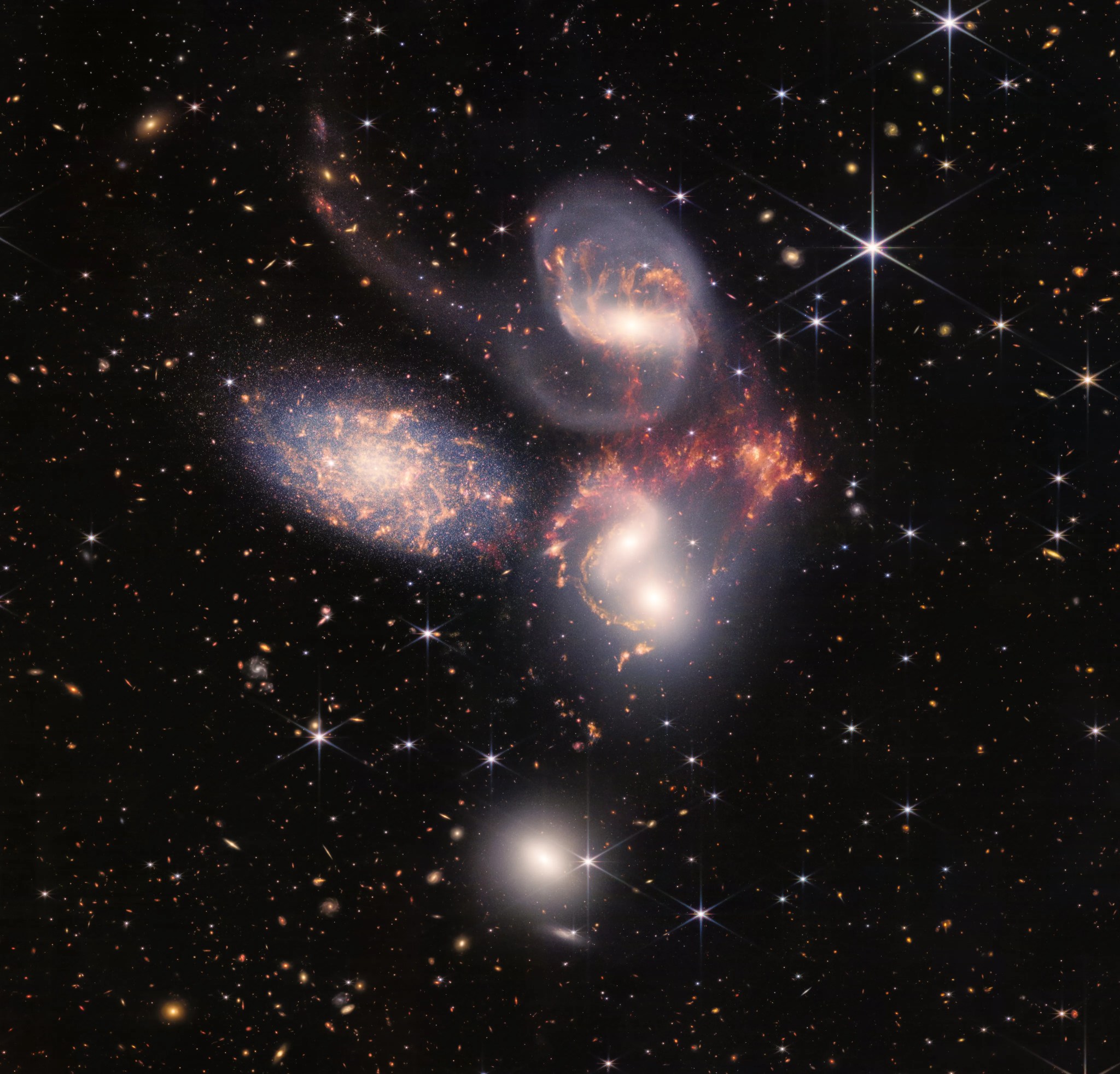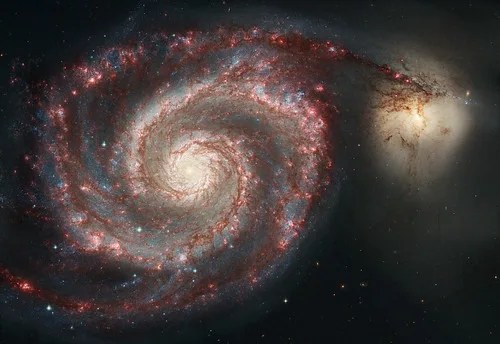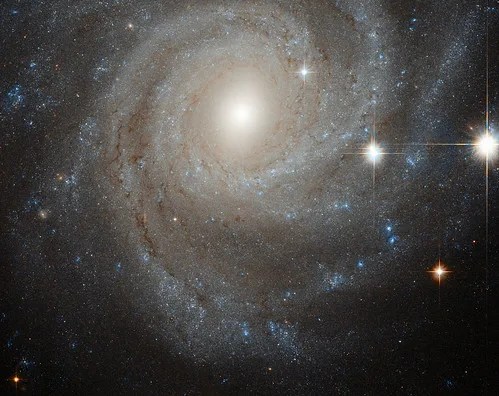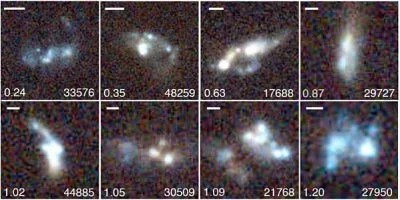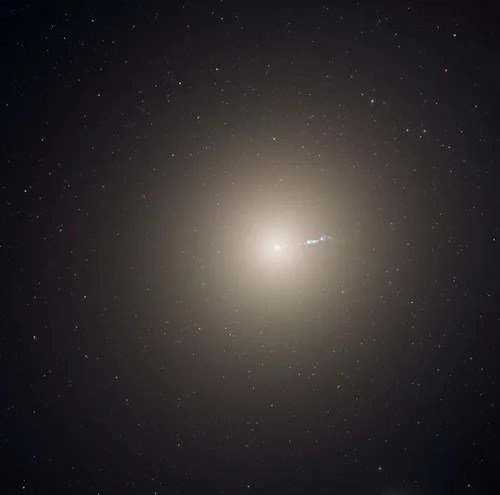Spirals And Ellipticals
Telescopes like the Hubble have captured many beautiful images of majestic spiral galaxies, like this one, which is called NGC 3344.
But galaxies have not always looked this way. The grand spirals we are so familiar with (indeed including our own) were formed over the course of billions of years by several different processes, including the collisions of smaller galaxies. Giant elliptical galaxies are thought to also be formed by the process of similar-sized galaxies colliding [see videos linked at the bottom of the page], disrupting each other, and merging. In fact, it is thought that nearly all massive galaxies have undergone at least one major merger since the Universe was 6 billion years old.
How Do The Oldest Galaxies Differ?
When we look at very distant galaxies, we see a completely different picture. Many of these galaxies tend to be small and clumpy, often with a lot of star formation occurring in the massive knots. The question of how these clumpy galaxies evolve and develop structure over time is a big open question in astronomy, and JWST is helping astronomers to learn more.
Open Questions
Other unanswered questions about galaxies include the following:
- How did the first galaxies form?
- How did we end up with the large variety of galaxies we see today?
- We see not only organized and structured spiral galaxies in the modern universe, we also see those giant ellipticals we mentioned earlier, and galaxies in a wide variety of irregular shapes and sizes.
We now know that extremely large black holes live at the centers of most galaxies but what is the nature of the relationship between the black holes and the galaxy that hosts them? There is also more to understand about the mechanisms that cause star formation-- whether it happens internal to a galaxy or because of an interaction with another galaxy or merger.
One thing we do know is that galaxies are still forming and assembling today. There are many, many examples of galaxies colliding and merging to form new galaxies. And in our own local neighborhood of space, the Andromeda galaxy is headed toward the Milky Way for a likely future collision many billions of years from now! (Fun fact: space is so big that when galaxies collide, the stars within them rarely do.)
Key Questions
- How are galaxies are formed?
- What gives them their shapes?
- How are the chemical elements distributed through the galaxies?
- How do the central black holes in galaxies influence their host galaxies?
- What happens when small and large galaxies collide or join together?
The Role Of Dark Matter
Computer models that scientists have made to understand galaxy formation indicate that galaxies are created when dark matter merges and clumps together. Dark matter is an invisible form of matter whose total mass in the universe is roughly five times that of "normal" matter (i.e., atoms). It can be thought of as the scaffolding of the universe. The visible matter we see collects inside this scaffolding in the form of stars and galaxies. The way dark matter "clumps" together is that small objects form first, and are drawn together to form larger ones. Here is an animation that shows the dark matter distribution in the universe at the present time, based on the Millennium Simulation, the largest N-body simulation carried out thus far!
This build-up of large systems is accompanied by the formation of luminous stars from gas and dust. As stars evolve, and eventually die, they give way to new generations of stars. Scientists believe that the interaction of stars and galaxies with the invisible dark matter produced the present-day galaxies, organized into what is known as the "Hubble Sequence of galaxies", shown at right.
Galaxy Formation Continues
This process of galaxy assembly is still occurring today - we see many examples of galaxies colliding and merging to form new galaxies. In our own local neighborhood of space, the Andromeda galaxy is headed toward the Milky Way for a possible future collision - many billions of years from now! Scientists today know that galaxies existed about one billion years after the Big Bang. While most of these early galaxies were smaller and more irregular than present-day galaxies, some are very similar to those seen nearby today.

























